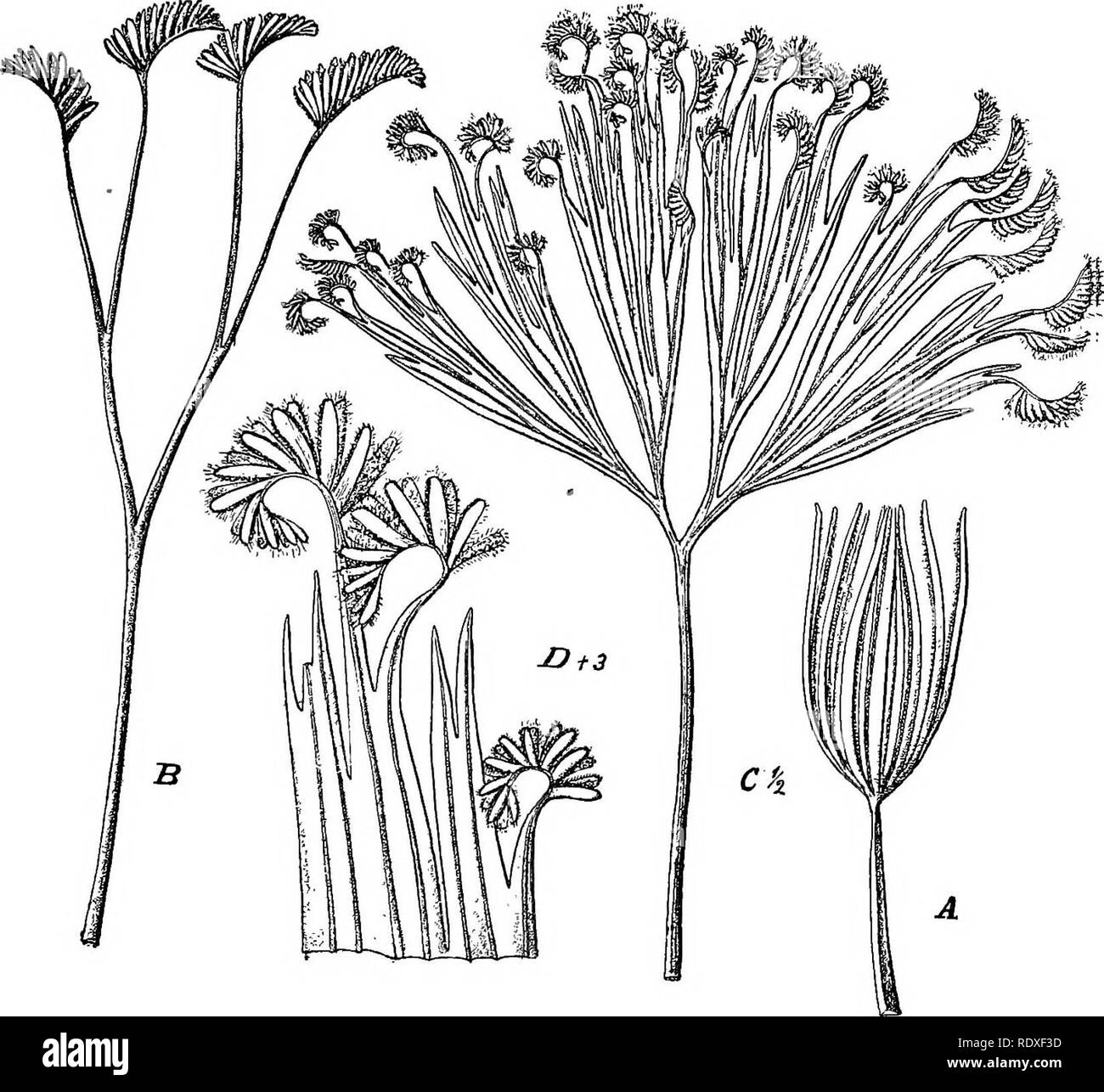. The origin of a land flora, a theory based upon the facts of alternation. Plant morphology. SCHIZAEACEAE 543 to a dichotomous branching is not so clear. In the former the lowest pair of pinnae are usually fertile, in the latter genus the sporangia may be distributed over the whole length of the leaf. Hairs are present in all the genera, and in all except Mohria they are filamentous, as in the Botryopterideae, Marattiaceae, and Osmundaceae,. Fig. 300. Upper parts of fertile leaves of the genus Schizaea. A Sch. pennula, Sw. B=Sch. bifida, Sw. C, D=Sck. elegans, J. Sm. In D the ultimate segmen

Image details
Contributor:
The Book Worm / Alamy Stock PhotoImage ID:
RDXF3DFile size:
7.2 MB (440.8 KB Compressed download)Releases:
Model - no | Property - noDo I need a release?Dimensions:
1648 x 1517 px | 27.9 x 25.7 cm | 11 x 10.1 inches | 150dpiMore information:
This image is a public domain image, which means either that copyright has expired in the image or the copyright holder has waived their copyright. Alamy charges you a fee for access to the high resolution copy of the image.
This image could have imperfections as it’s either historical or reportage.
. The origin of a land flora, a theory based upon the facts of alternation. Plant morphology. SCHIZAEACEAE 543 to a dichotomous branching is not so clear. In the former the lowest pair of pinnae are usually fertile, in the latter genus the sporangia may be distributed over the whole length of the leaf. Hairs are present in all the genera, and in all except Mohria they are filamentous, as in the Botryopterideae, Marattiaceae, and Osmundaceae, . Fig. 300. Upper parts of fertile leaves of the genus Schizaea. A ~Sch. pennula, Sw. B=Sch. bifida, Sw. C, D=Sck. elegans, J. Sm. In D the ultimate segments are more strongly magnified. (After Diels, from Engler and'Prantl, Nat. Pflanztnfam.~) and are sometimes glandular. In Mohria they are no longer filamentous, but flattened as scales : this condition, which is characteristic of most Ferns of a more advanced type, is readily referable in origin to lateral widening accompanied by longitudinal cell-divisions. The sporangia are not arranged in sori, but solitary, a number of them being borne on each fertile segment. In Schizaea and Aneimia they appear when mature disposed in regular rows, one on each side of the midrib, on the lower surface of the fertile segments. They may be protected. Please note that these images are extracted from scanned page images that may have been digitally enhanced for readability - coloration and appearance of these illustrations may not perfectly resemble the original work.. Bower, F. O. (Frederick Orpen), 1855-1948. London, Macmillan and Co. , Ltd.